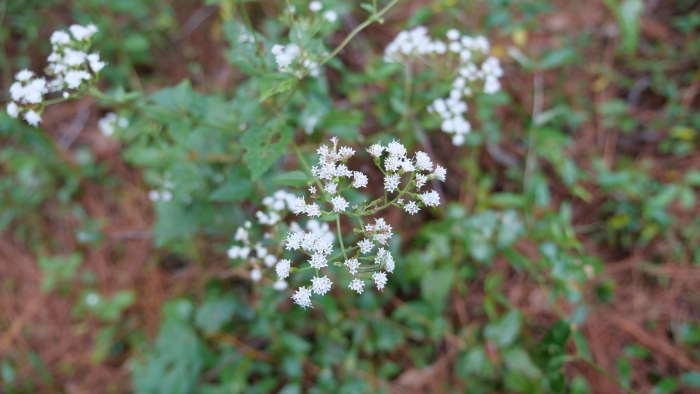Hammock Snakeroot
(Ageratina jucunda)
Hammock Snakeroot (Ageratina jucunda)
/
/

Valerie Anderson
CC BY 4.0
Image By:
Valerie Anderson
Recorded By:
Copyright:
CC BY 4.0
Copyright Notice:
Photo by: Valerie Anderson | License Type: CC BY 4.0 | License URL: http://creativecommons.org/licenses/by/4.0/ | Rights Holder: Valerie Anderson | Publisher: iNaturalist | Date Created: 2019-11-08T11:38:27-08:00 |



















































Estimated Native Range
Summary
Ageratina jucunda, commonly known as Hammock snakeroot, is a perennial herb native to the southeastern United States, specifically Georgia and Florida, where it thrives in moist woodlands, wetlands, and along stream banks. It typically grows to a height of 2-3 feet and a width of 0.8-1 feet. The plant’s genus name, Ageratina, is derived from Greek meaning ’un-aging’, in reference to the flowers maintaining their color for an extended period. The appearance of Hammock snakeroot is characterized by its clusters of small, fluffy, white flowers that bloom in late summer to fall, adding a long-lasting display of color to the garden.
Hammock snakeroot is valued for its ability to thrive in wet conditions and its relatively low maintenance requirements. It is often used in rain gardens, native plant gardens, and as a border plant. The plant prefers full sun to part shade and requires high amounts of water, making it suitable for areas with medium to wet soil drainage. While it is not commonly affected by serious pests or diseases, it can occasionally suffer from fungal issues in overly wet conditions.CC BY-SA 4.0
Hammock snakeroot is valued for its ability to thrive in wet conditions and its relatively low maintenance requirements. It is often used in rain gardens, native plant gardens, and as a border plant. The plant prefers full sun to part shade and requires high amounts of water, making it suitable for areas with medium to wet soil drainage. While it is not commonly affected by serious pests or diseases, it can occasionally suffer from fungal issues in overly wet conditions.CC BY-SA 4.0
Plant Description
- Plant Type: Herb
- Height: 2-3 feet
- Width: 0.8-1 feet
- Growth Rate: Moderate
- Flower Color: White
- Flowering Season: Summer, Fall
- Leaf Retention: Deciduous
Growth Requirements
- Sun: Full Sun, Part Shade
- Water: High
- Drainage: Medium
Common Uses
Bee Garden, Bird Garden, Groundcover, Low Maintenance
Natural Habitat
Moist woodlands, wetlands, and stream banks
Other Names
Common Names: Lesser Snakeroot
Scientific Names: , Ageratina jucunda, Eupatorium jucundum, Eupatorium suaveolens, Eupatorium juncundum, Kyrstenia jucunda,
GBIF Accepted Name: Ageratina jucunda (Greene) Clewell & Wooton